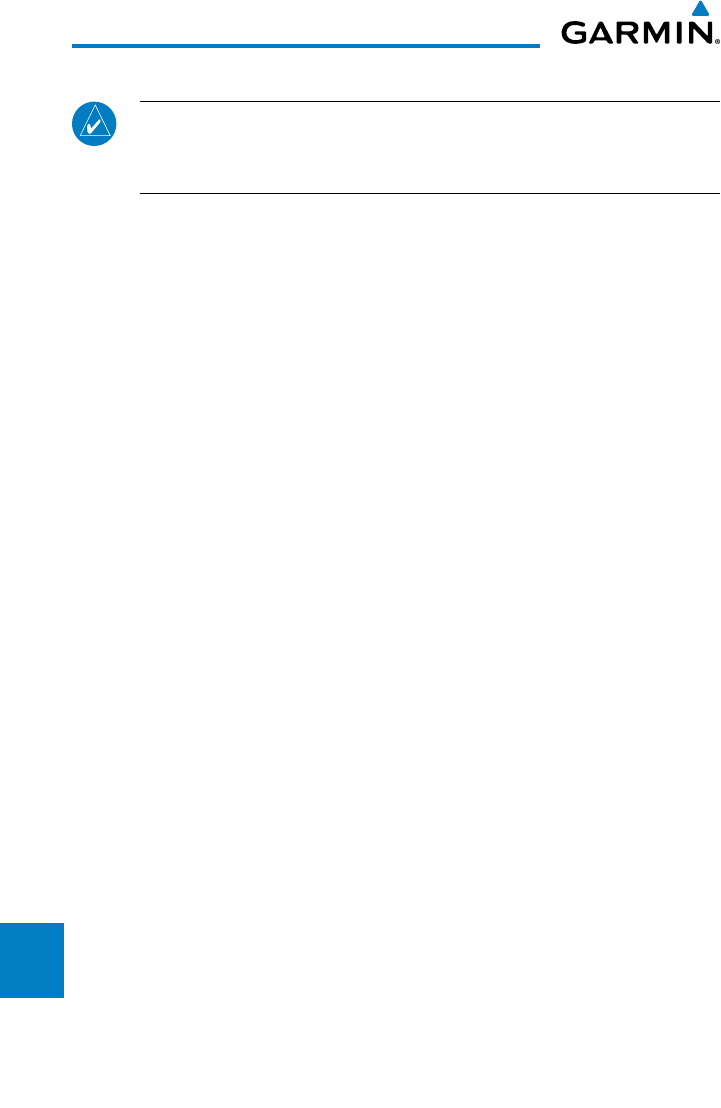
A-2
Garmin G500 Pilot’s Guide
190-01102-02 Rev. B
Foreword
Sec 1
System
Sec 2
PFD
Sec 3
MFD
Sec 4
Hazard
Avoidance
Sec 5
Additional
Features
Sec 6
Annun.
& Alerts
Sec 7
Symbols
Sec 8
GlossaryAppendix A
Appendix B
Index
Garmin Databases
NOTE: The data contained in the terrain and obstacle databases comes from
government agencies. Garmin accurately processes and cross-validates the
data, but cannot guarantee the accuracy and completeness of the data.
The following GDU 620 databases are stored on Supplemental Data Cards
provided by Garmin:
•Terrain–Theterraindatabase contains terrain mapping data. It is updated
periodically and has no expiration date.
•Airport terrain – The airport terrain database contains detailed airport
terrain data. It is updated periodically and has no expiration date.
•Obstacle – The obstacle database contains data for obstacles, such as towers,
that pose a potential hazard to aircraft. Obstacles 200 feet and higher are
included in the obstacle database. It is very important to note that not all
obstacles are necessarily charted and therefore may not be contained in the
obstacle database. This database is updated on a 56-day cycle. Obstacles
will still be shown after the database has expired.
•SafeTaxi – The SafeTaxi database contains detailed airport diagrams for
selected airports. These diagrams aid in following ground control instructions
by accurately displaying the aircraft position on the map in relation to
taxiways, ramps, runways, terminals, and services. This database is updated
on a 56-day cycle. SafeTaxi will still be shown after it has expired.
•FliteCharts – The FliteCharts database contains procedure charts for the
United States only. This database is updated on a 28-day cycle. If not updated
within 180 days of the expiration date, FliteCharts no longer functions.
Since these databases are not stored internally in the GDU 620, a Supplemental
Data Card containing identical database versions must be kept in each display
unit for dual installations. After subscribing to the desired database product,
the database product will need to be downloaded to a Supplemental Data Card.
Insert the Supplemental Data Card into the card slot shown in Figure A-1. The
upper slot is typically used for updating the navigation database and is then
normally left open. The card may be inserted in either slot. The Supplemental
Data Card should not be removed except to update the databases stored on the
card.


















